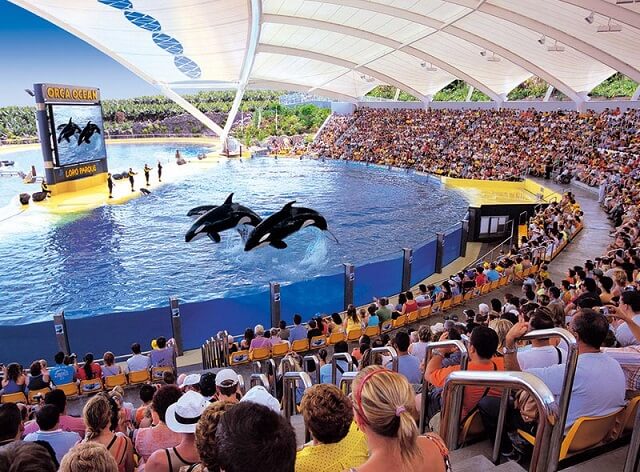The day after the teenage orca Skyla died suddenly at Loro Parque zoo in the Canary Islands, the management issued a statement saying:
“Skyla was in perfect condition until yesterday, when she began to show some signs of discomfort, which immediately mobilized our team of experts. Despite all the effort, the veterinarians were only able to certify her demise.”
The following day, the zoo offered this brief follow-up on the necropsy they had performed:
“According to the results of the necropsy, the cause of death was intestinal torsion, which caused acute septicemia and immediate death. This pathology can occur suddenly in completely healthy animals and is absolutely inoperable in cetaceans, so, despite all our precautions and efforts, it would not have been possible to do anything to save Skyla’s life.”
Since Loro Parque offered no further details, we asked Dr. Heather Rally, a wildlife veterinarian with specific training and experience in marine mammal medicine and a member of the Whale Sanctuary Advisory Group, for her view on the zoo’s statement. Dr. Rally responded that while it is likely true, it is not necessarily the full truth.
“While the zoo’s statement is likely true, it is not necessarily the full truth.”“It is highly unlikely,” she writes, “that Loro Parque didn’t have some indication of at least a pre-existing gastrointestinal illness, recent traumatic incident, and/or an indication of pain or distress prior to the day of her death. Indeed, most cases of intestinal torsion in cetaceans were preceded by some predisposing factor. For example, we know that chronic gastrointestinal conditions can predispose to intestinal torsion in cetaceans, and in an array of other species.
“We also know that Morgan [one of Skyla’s tank mates] routinely eats paint, and likely pieces of concrete that she has bitten off of the sides of her tank, and we have no reason to believe the other orca don’t engage in the same behavior. This is just one example of a hazard in their immediate environment that can cause gastrointestinal disease and thereby predispose to torsion when a portion of the digestive tract becomes twisted by rotating, looping around, or folding over itself.”
Dr. Rally says that in extreme cases, once the intestines have become twisted, “the tissues rapidly lose their oxygen supply and die, causing the release of bacteria from the intestines into the abdomen and bloodstream. This can happen rapidly, leading to a sudden onset of pain and distress, and quickly progressing to death by sepsis and circulatory shock.”

Skyla with Kohana and Tekoa at Loro Parque Zoo. (This and title photo from Wikimedia Commons.)
Skyla’s family
Loro Parque’ statement included a sentence about Skyla having been “part of the Loro Parque family.” In fact, Skyla was born at SeaWorld Orlando, and her family consisted of her parents, Kalina (the first orca to have born and raised in captivity) and Tilikum (who had been captured as a calf in Icelandic waters), and many brothers and sisters, most of whom she would never meet.
Kalina and Tilikum had three more calves “together” (one of whom was stillborn), and each was bred many more times with other captive whales. Kalina died at age 25 of bacterial septicemia.
At age two, Skyla was transferred across the Atlantic to Loro Parque. She was said to have a dominant personality, which she exhibited not only toward her tank mates but toward her trainers, to the point where humans had to be prohibited from getting in the water with her. (In 2009, a Loro Parque trainer, Alexis Martinez, had been killed by one of the other orcas, Keto.)
With the death of Skyla, Loro Parque has six remaining orcas: Keto, Tekoa, Kohana, Adàn, Morgan and Morgan’s two-year-old daughter Ula.